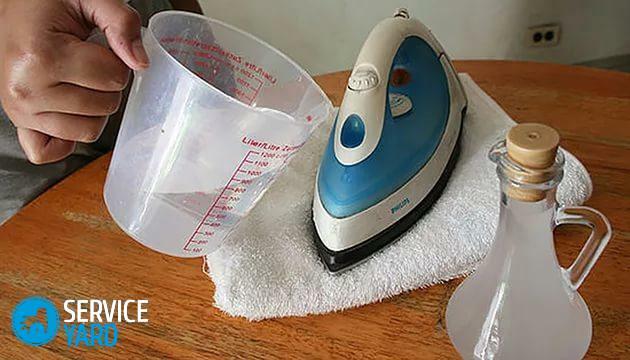Correctly chosen dryer for vegetables and fruits will ensure the preservation of the harvest for the whole winter.
Structurally Electric driers machine a little more complicated than its counterpart, which uses the sun's energy.
Both devices consist of a set of similar elements, but electric version fitted with accessories:
- housing made of plastic or a light metal;
- inside guides provided for multiple trays;
- free pallets are removed from the drying chamber for loading vegetables, fruits, mushrooms, meat or fish;
- depending on the design features of one of the walls of the chamber is provided with ventilation openings for the circulation of air flows;
- heating to the desired temperature can be built in heat source, which is complemented by a fan.
At the same time it complements the advantages of a conventional device a number of other advantages:
- qualitatively configured factory unit protects the contents from the adverse factors;
- evenly dries and stores consumer properties for a long period;
- It helps to preserve vitamins and other useful elements;
- It provides quality processing regardless of external conditions;
- has moderate dimensions and able to operate in any location where there is a possibility to connect to the power supply;
- It allows you to choose the optimal mode of operation and drying of different products.
The operating principle of the dryer based on the dehydration product by treatment with heated air flows content or pressure change.
types elektrosushilok
This assistant avid gardener can be classified according to different parameters. Among them are the size, the direction of air flow, management options, and other design features. But the basic criterion of the classification is a method of treating. By the principle of action, they are divided into infrared, electrical and vacuum.
infrared
This type of unit is based on the evaporation of moisture under the influence of infrared light, which penetrates the entire depth of the tissue structure. This version of dehydration as close as possible to the effect of solar radiation.

Features of influence you can save more than 90% of mineral properties. The range of products that can be handled in this manner, maximally wide:
- root crops and other vegetables;
- apples and other fruits;
- meat and fish;
- cheeses;
- Fresh charges of various herbs.
Berries and other fruits are not only useful, but also attractive in appearance. Drying and drying in infrared devices, better meet the requirements for quality and efficiency:
- power consumption is minimal in this respect the most economical device against competing options with different types of dehydration;
- Products dried manner lossless stored for years, and in the presence of vacuum package can remain suitable for use for 2 years;
- the probability of infection of microorganism, mold development, reproduction botulinum minimized.
Of the minuses IR dehydration is often called the high cost of a longer dewatering process, limited choice in the market.
electrical
Such ovoschesushilki called convection. They use a heater as a heating element. Dehumidification takes place by treating the fruit flow of hot air.

The advantages of convection models are:
- dehydration speed, the contents of the drying chamber is brought to readiness quickly, saving a significant part of the useful qualities;
- small size, they are compact, easily available on the small-sized kitchen, suitable for transport;
- acceptable cost and a variety of choices, convective models are available to most consumers, even with a small income and are widely available on the market.
Despite the obvious advantages, they have enough minuses to prefer more sophisticated devices:
- by convection useful properties are maintained, but the loss of vitamins and minerals is significantly greater than the IR embodiment;
- moisture evaporation occurs gradually from the core to the crust, as a result can not get too dry crust or finally dried central part of the fruit;
- in the latter case in the fetus are formed favorable conditions for the development of mold and pathogens botulism, long-term storage can lead to loss of consumer qualities.
Finally, the variety, based on this principle of operation, less efficient drying of large volumes is relatively more expensive energy costs.
vacuum
Degidratr fruit and vegetable vacuum type used for domestic purposes. This equipment is designed to operate on an industrial scale.

The most modest machine with the principle of a minimum cost in the tens of thousands of rubles. Nevertheless, it is the most promising method of dehydration of fruits and vegetables.
Its benefits include:
- versatility effective vacuum dehydration method is applicable to all kinds of food products;
- sparing operation mode setting contents almost not lose vitamins and minerals, it retains the appearance of the commodity;
- long shelf life, workpiece treated in this way, if there is a sealed package, can be stored for several years.
From the obvious disadvantages of such equipment should include:
- scale of prices, which range from a few tens of thousands to millions;
- large size, which practically excludes their use in the kitchen version;
- structural complexity and therefore the need for a service technician.
However, for people with incomes above the average, nothing is impossible, and there are options that can be used at home when there is sufficient free space.
Also, everyone has the opportunity dryer make their own hands and save a decent amount.
The main parameters of dehydrators
Select the device for drying home is not always easy. At a minimum, you need to decide the purpose of buying and owning general information about its basic parameters.

Experts recommend to pay attention to the following list of features:
- capacity of the internal chamber;
- power performance;
- adjustment of temperature conditions;
- presence / absence of heater and its location;
- the direction of air flow;
- types of control;
- the material used to build housing.
In anticipation of a more comfortable use, should look to the additional equipment. This airflow trays, auto, adjust their positions, overtemperature protection.
Capacity
Selecting this option is determined by the needs of the household. This may be a small-scale processing, within a small family needs or harvesting of the crop from the suburban area. According to this parameter, most models can be divided into the following categories:
- standard version with a number of trays of from 3 to 5 that can handle several kilograms and meet the needs of ordinary families;
- crop for processing rich portion from the personal device better suited to the number of trays 6 to 8;
- household model, designed for maximum volumes, which contain up to 20 trays.
It is not always about the volume can be measured by the number of pallets, there are models that combine a high capacity internal camera and a relatively small number of sections. Between each of them usually is provided an enlarged lumen. This design is intended for processing the fruit whole, as opposed to the conventional counterparts, in which only cut the fruit.
Power
This test can affect the dewatering rate but more often it corresponds to the volume of the chamber, the greater the capacity, the higher the index number of this characteristic. The range of parameters can be varied from 150 W to 1 kW:
- Small units with a capacity of 150 to 200 watts are classified as low-power consumer devices, designed for the needs of a small family, where there is no need for larger volumes;
- counterparts with the force of the heat flux of 350 - 600 watts are considered optimal for everyday needs, without compromising them can be used for a single drying and processing of country crop of medium size;
- dehydrators per kW is usually intended for meat or summer residents who collect high yields and seek to maximize their recycling.
The strength of the heat flux is able to accelerate the dehydration, if the design has a relatively small chamber, the capacity will be sufficiently high. Otherwise, do not expect faster processing cycles.
Controlled temperature regimes
Choice of temperature indicating device versatility. Various kinds of products retain vitamin and trace element composition only if the respective temperatures of metal recycling. Presence allows termolregulyatora comply with this condition is high-quality processing. Most of the convection-type models, as a rule, are equipped with three to regime control:
- in the first power saving mode, the maximum temperature reached 40 ° C, it is considered optimal for herbal, other greens;
- Second it can increase up to 55 ° C, which allows to process almost the entire list of products, including meat;
- a third position increases heating to 75 ° C, it can be used to increase the rate of evaporation of moisture.
The budget version and the average price range is usually equipped with a switch with two or three positions. A more convenient configuration is one rotating knob with an extended scale. This allows more precisely arrange the device in accordance with the characteristics of the product.
Heater and its position
For convection dryers designed for vegetables and fruits, an important design element is the fan with built-in heating element. He warms the air, directs it streams to the contents of the pallet. In different models of heating-venting system can be mounted in three different positions:
- vertically below the camera in this case heating occurs to lower tiers, the design does not require high power even when scaled up, but it is unfortunate, since it is often clogged with garbage and drops of juice pallets;
- Vertically, a thoughtful layout that is devoid of these drawbacks, thus saving on the dimensions of the body, but the key disadvantage of both options is saved, the trays are heated unevenly, they need periodic swap;
- horizontal position, the contents of the tray is cleaned evenly, contributing to the quality of treatment, but such an arrangement increases the size and impact on the cost, which is becoming more expensive.
The design of low-end models may lack this element. In this case, the circulation of the air mass occurs naturally when as it rises upwardly heating.
control options
Not the last parameter affecting the functionality of the device should recognize the type of the control unit. It can be done in a mechanical or electronic form. The first option is being tested in practice, provides sufficient accuracy setting, suitable for self-repair, plus more available in terms of price. The second different preset modes utmost precision, operational settings corresponding to the touchpad button, just press. However, it increases the overall cost of the device, the sensor is not always responds to a light touch, especially with wet hands.
The material for the housing
In this case, only two options for the choice of metal and plastic. The first is more durable, but heavy, often heated and not always aesthetically pleasing. The second is much easier, a little less strong, but if you do not break down on purpose, can survive the hosts. At the cheaper models have no risk of high-quality plastic, which on heating starts to smell. From this choice should be abandoned, he not only spoils the flavor of fruit, but also has a negative impact on health.
Practical advice and recommendations
For novice users would be useful are a few tips that will help extend the life of the unit, regardless of its design.
- Before starting the operation it is important to become familiar with the requirements of the regulations is to avoid gross errors when first turned on.
- After use, the device is desirable to rinse thoroughly, but without household chemicals, it can be stored in: tight spaces and affect the taste properties;
- At the beginning of operation of the machine it is recommended to set the maximum temperature and reduce it when it is ready to achieve that will positively affect the useful qualities of the product;
- When using vertical convection dryer for fruits and vegetables is undesirable to process different fruits at one time, they can acquire unusual smells and tastes.
Finally, in the process of convection should often swap trays, top down, and vice versa. This promotes more uniform dewatering content.



